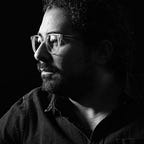The Suitcase of Cinema — Japan
by Javier Solórzano Casarin
“Drunken Angel” (1948)
Akira Kurosawa
Akira Kurosawa’s body of work is one of the great legacies of the history of cinema. Hollywood in the 1970’s was famous for its rebellious and groundbreaking filmmaking style. This unique era was greatly benefited by the legendary Japanese filmmaker. Many directors who began their careers at that time, have spoken of his undeniable influence.
There were many universal and socially critical themes that resonated in Kurosawa’s films, one of those themes, common on his filmography was the massive national depression that shattered Japan, right after World War II. As one of the countries most affected by the events that took place in Europe and Asia, the postwar period was not only a devastating political and social setting that permeated in Japan for decades, but also an emotional state that affected the country deeply. Kurosawa like many artists of that time, managed to capture these complex sentiments. He orchestrated them with a powerful and blunt poetic language; endowed with great philosophical significance.
“Drunken Angel” expresses these ideas with masterful subtlety.
The central relationship between an alcoholic doctor (Takashi Shimura) and a dapper young gangster (Toshiro Mifune) is the heart of the story. It is with these characters that Kurosawa manages to tell the personal drama that afflicted not only the lost souls of postwar Japan, but also found a way to make it into a universal experience.
Dr. Sanada is a man who despite being resentful with life, believes that change is possible and that people can improve. Every day, he cares for patients in one of the many slums of the capital and although he does it with some measure of reproach, eventually it is for him a cause worthy of happiness.
When he meets the arrogant gangster Matsunaga in his humble office, attending a bullet wound in his hand, he knows right away who he is and where he comes from. He discovers that his reluctant new patient has lung disease, indicating an imminent and certain death. The rejection of such a diagnosis is manifested violently by Matsunaga. Both men embark on a very particular relationship of love and hate.
Navigating through the splendid narrative of “Drunken Angel”, the old doctor fights to save the life of this volatile gangster. In the process, his own faith in humanity is seriously tested. His instincts tell him that the best course of action is to do nothing but his heart dictates otherwise. Matsunaga meanwhile struggles to take the road to mental and physical recovery but his very nature and his environment persists against better judgement.
At the end, the story becomes a wondrous metaphor, perhaps idealistic but nevertheless genuine about a country trying to salvage itself from an unfathomable social disease brought upon by the darkness of war. A nation with deep-rooted and unshakable traditions; seeking to survive the cultural imposition outlined by the United States.
The performances of both Mifune and Shimura are extraordinary, constructed to fit the famed style of the “Noh” theater — the interpretative school of acting where they studied–; they express the grief and anguish of their characters with commanding force. These actors are two of the most frequent collaborators of Kurosawa, actors that have shaped most of his films’ daunting soulfulness. In the case of Toshiro Mifune, his most famous interpreter, this was their first collaboration in a long career they shared together in film.
The original score by Fumio Hayasaka, moves between tragedy and innocence with an organic configuration which merges with the natural atmosphere of the film. In this sense, the sound design plays an essential role as the palette of sounds (the vagabond’s guitar, the rain and the monotonous and distant urbanization) envelops us in the dramatic world of these characters.
Takeo Ito’s cinematography paints the night and shadows with a resounding melancholy. Each profile, chiaroscuro, and facial detail of the actors articulates the temperaments of the story.
The conclusion of the film, unveils the notion that Kurosawa does have some inkling of hope and at the same time he does not presume to have any vacant delusions of life. It ends at a bittersweet crossroad, because although there is an open invitation for the audience to form an independent opinion, the portrait of our world cannot transform the fate that lies ahead.
The beauty of Kurosawa’s story is that despite what happens, his drunken angel believes with a certain tenacity that there is always hope for everyone.
